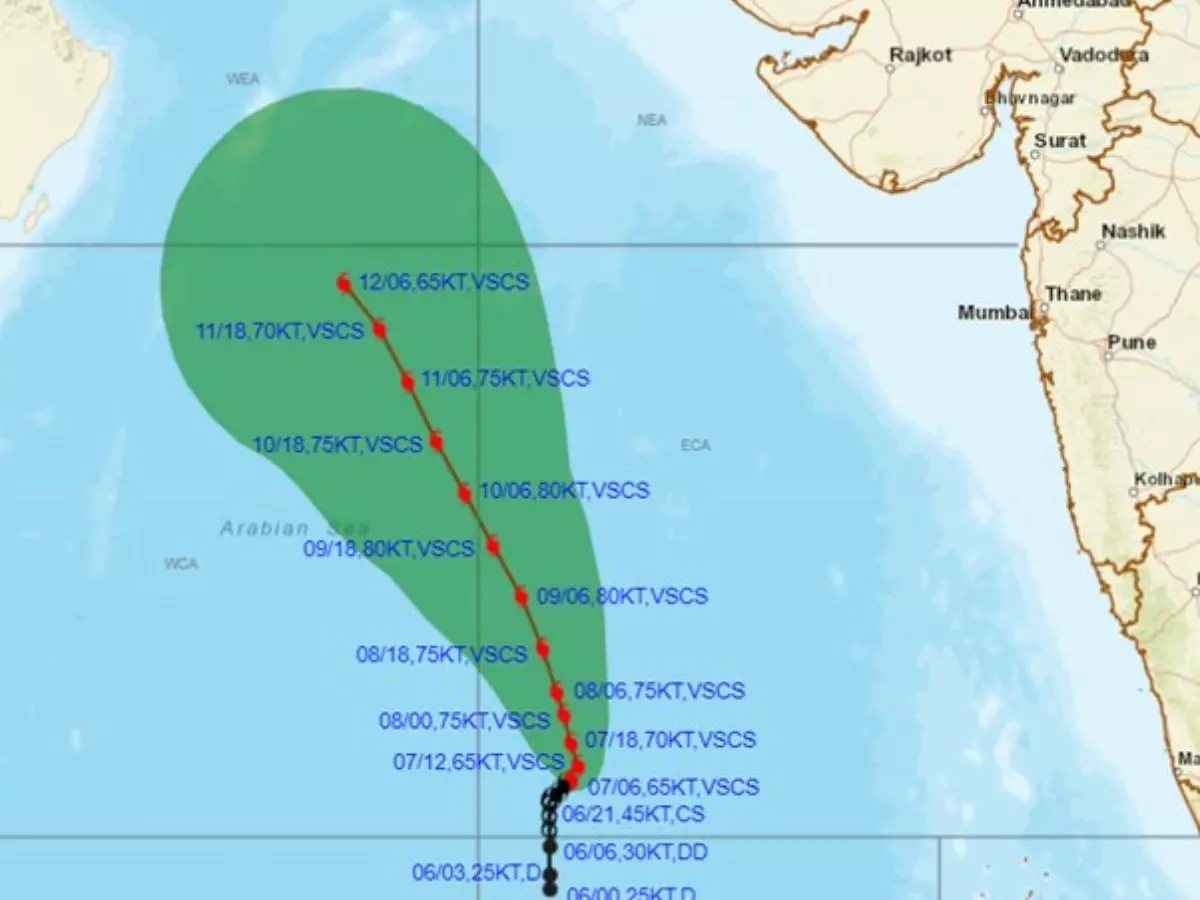Severe Cyclone Biparjoy Has Intensified Into A Very Severe Cyclonic Storm, Says IMD
The India Meteorological Department (IMD) on Wednesday said that the first cyclone in the Arabian Sea this season - Cyclone Biparjoy has already intensified.

The India Meteorological Department (IMD) on Wednesday said that the first cyclone in the Arabian Sea this season - Cyclone Biparjoy has already intensified into a Very Severe Cyclone.
"Severe cyclonic storm Biparjoy intensified into a very severe cyclonic storm and lay over about 860 km west-southwest of Goa, 970 km southwest of Mumbai, 1050 km south-southwest of Porbandar and 1350 km south of Karachi," the IMD said on Wednesday afternoon.
Severe cyclonic storm Biparjoy intensified into a very severe cyclonic storm and lay centered at 1130 hours IST today over about 860 km west-southwest of Goa, 970 km southwest of Mumbai, 1050 km south-southwest of Porbandar and 1350 km south of Karachi. pic.twitter.com/853HKBZYoX
¡ª India Meteorological Department (@Indiametdept) June 7, 2023
Cyclone Biparjoy intensifying rapidly
In the morning the IMD had said that Cyclone Biparjoy had intensified into Severe Cyclone and that the intensity of it would go up further.
Meteorologists say the tentative track of the system will be in the northward direction but storms at times defy the predicted track and intensity. Forecasting agencies said the storm has been undergoing "rapid intensification".
Severe Cyclonic storm Biparjoy over eastcentral and adjoining southeast Arabian Sea at 0830 IST of 07th June, near lat 12.7N and lon 66.2E, about 880km WSW of Goa. Likely to move nearly northwards and intensify into VSCS during next 12 hrs. pic.twitter.com/6rsdoPWQPu
¡ª India Meteorological Department (@Indiametdept) June 7, 2023
Landfall unlikely
Cyclone Biparjoy intensified by 40 knots (74 kmph) since Tuesday morning, according to the Joint Typhoon Warning Centre (JTWC), the US Department of Defense's agency responsible for issuing tropical cyclone warnings for the Pacific and Indian Oceans.
The Met office said it is likely to move nearly northwards and then move north-northwestwards during the subsequent three days.
The IMD has not yet predicted any major impact on countries adjoining the Arabian Sea, including India, Oman, Iran and Pakistan.
The current trajectory of the cyclonic circulation suggests that it is unlikely to make landfall and will lose steam and will be reduced into a low pressure area by June 14.
 BCCL
BCCL
Cyclone Biparjoy could affect monsoon
While Cyclone Biparjoy is unlikely to make landfall, IMD has said that it will affect the onset and the further progression of the annual monsoons.
The monsoon rains which normally start on June 1 in Kerala has been delayed. The IMD had earlier predicted it to start around the 4th, which also did not happen.
Monsoon to hit Kerala in 48 hours
The weather agency on Wednesday said that conditions are becoming favourable for the onset of monsoon over Kerala during the next 48 hours.
The conditions are also favourable for further advance of monsoon into some more parts of the South Arabian Sea, the entire Lakshadweep, some more parts of Southwest, Central and Northeast Bay of Bengal and some parts of Northeastern states during the next 48 hours, the IMD said.
 BCCL
BCCL
Private forecaster, Skymet Weather also said that monsoon could hit Kerala in the next two days, but added that it would be a weak one and its progress beyond the southern peninsula will be slow.
Increase in cyclones due to climate change
Scientists say cyclonic storms in the Bay of Bengal and the Arabian Sea have been intensifying rapidly and retaining their intensity for a longer duration due to climate change.
According to a study 'Changing status of tropical cyclones over the north Indian Ocean', the Arabian Sea saw a significant increasing trend in the intensity, frequency, and duration of cyclonic storms and very severe cyclonic storms during the 1982-2019 period.
 BCCL
BCCL
"The increase in cyclone activity in the Arabian Sea is tightly linked to the rising ocean temperatures and increased availability of moisture under global warming. The Arabian Sea used to be cool, but now it is a warm pool," said Roxy Mathew Koll, Climate Scientist at the Indian Institute of Tropical Meteorology.
For more on news, sports and current affairs from around the world, please visit Indiatimes News.
